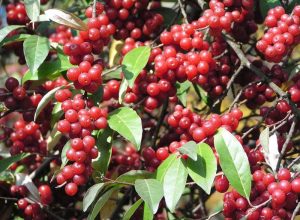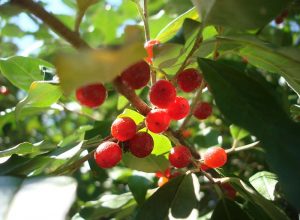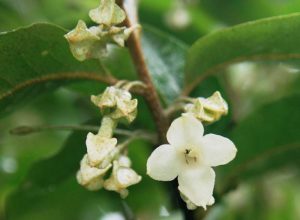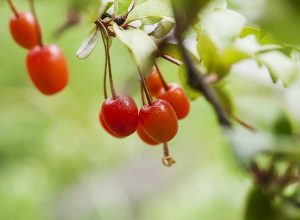Japanese Silverberry – Eleagnus Umbellata


Originally from Eastern Asia and widespread in all temperate regions, the Eleagnus Umbellata belongs to the same genre as the common Eleagnus that are present in most gardens both the green variety, Ebbingei Eleagnus, and those with yellow stained leaves, Speckled Ebbingei Eleagnus, to form hedges or as isolated specimens. A vigorous and messy shrub with a deciduous leaf, insensitive to strong colds, very resistant to drought and winds, enough to be used as small windbreakers, adaptable to marine climates like mountain climates, the Japanese silverberry is a very rustic plant, adaptable to everything with no necessity. It only needs light and sun, in fact in the shade it grows very slowly, with little vegetation that has little, if any flowers.
The leaves are lanceolate, light green and are typically covered with many small white dots that, especially in spring, give the bush a pleasant greyish-green shade. In correspondence of the leaf pits, it’s easy to find the thorns that differ from the common rose thorns as these are small pit branches, one-three centimetres long, whose vegetation wasn’t able to develop itself, so they turned into small very resistant pointed twigs.
TERRAIN
The plant develops at its best with relatively acid and fertile soils, but it also manages to vegetate in completely opposite ones. You can see beautiful specimens in gardens along the sea or in poor and stony soils and in damp and rainy areas and arid areas.
This depends on bubbles in the roots, that are an accumulation of nitrogen that is present in the atmosphere, that the plant, through the leaves, manages to store and use when the environmental conditions are not favourable (phenomenon known as nitrogen fixing). The plants close to this also use this and the soil tends to become more fertile. An example, is the clover, which also has this feature, used in the country as green manure, which is the agricultural practice with which those cultivations are planted, generally legumes, that can absorb the atmospheric nitrogen, to increase fertility.


FLORA AND FRUIT
The flowers, that appear in spring after the leaves, are individual, but grouped in 8/10, each with a fairly long stem, that is white and tends to be yellow when it withers, from the shape of a small tube that is almost two centimetres long where at the end, once blossomed, four triangular “fake petals” open in cross with at the centre, perfectly geometrical, four stamens.
The flowers, hermaphrodite and fertile, are very perfumed and they spread a very pleasant fragrance around the plant that can be smelled all day, they are also rich in nectar and they are easily visited by bees that, with their work guarantee a perfect pollination.
At the end of summer, the fruit appear that are many and cover the whole branch, giving it a very particular aspect; they are spherical and like the leaves are covered with small white dots. Inside there is a big seed that easily separated and is also edible.
USE AND HEALTH PROPERTIES
Once the fruit has been picked, it’s easily stored for a couple of weeks and they are usually consumed fresh, but they are also great for marmalades even if the preparation is quite difficult given the presence of seeds.
Rich in vitamin C, they have a relevant amount of sugar with 5% in protein and many salt minerals. Unique characteristic for fruit, is the presence, in the pulp, of essential fat acids, which are the ones that our organism can’t synthesize from other substances, but as they are essential, they need to be introduced through food that contain them (Series Omega3 and Omega6).
PRUNING AND CULTIVATION
A shrub with a vigorous and messy growth it requires winter pruning to contain and thin the plant, but it isn’t indispensable in open spaces. If you intervene, you need to remove the older branches in favour of the new ones and between these to choose the more robust, but that are also short. Shortening the branch by cutting the tip, may bring to a heavy globalisation of the shrub with the possible formation of new long vegetation that could not bring flower buds.
Manuring and watering are the usual ones, so only in case of extreme drought.
Among parasites, it’s easy to find the broad nosed weevil and sporadic attacks from aphids, while, but only in terrible climate conditions, the fruit could be hit by the fungi Botrytis Cinereal (grey mold).
